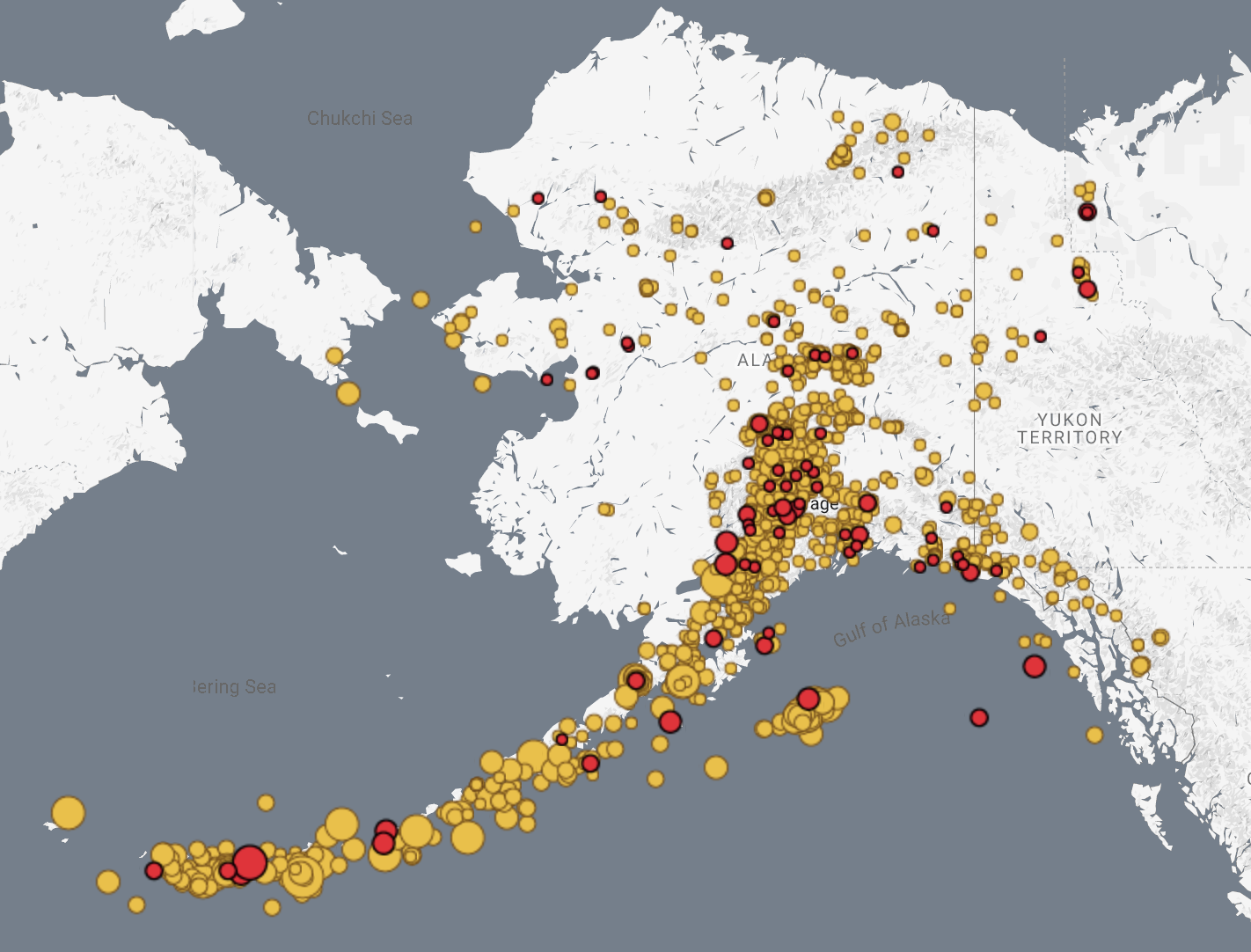By David Jacobson, M.Sc., Temblor
Click here to protect yourself from natural disasters

In a recently published study, scientists at the University of Alaska Fairbanks found evidence of slow earthquakes (known as very low-frequency earthquakes) preceding an earthquake, a phenomenon previously only seen in laboratory experiments. The discovery of such slow quakes creates an “observational bridge from laboratory to real-world environments,” which could aid in the understanding of earthquakes. In the unlikely event that this proved to be a general phenomenon, it could light the way toward eventual earthquake prediction.

The site of these events is west of Fairbanks, Alaska in an area known as Minto Flats. While precursory events prior to large mainshocks have been observed before, such as foreshocks seen before the 2011 M=9.0 Tohoku earthquake, very little has been seen in the minutes and seconds that lead up to an earthquake. In the lab, earthquakes nucleate or begin with a slow rupture that gradually ramps up until it reaches a “critical size” and accelerates to seismic speeds of 5,000 km/hr. Such precursory signals could represent an early stage in the earthquake nucleation process. So far, this phenomenon has not been seen on faults such as the San Andreas. However, on the remote Minto Flats Fault Zone, a dense purpose-built seismic network captured this process.

“Never in my wildest dreams did I expect we’d see something like that again.”
Back in 2012, scientists saw a signal of earthquake nucleation lasting 24 seconds, before it ramped up to a M=3.8 earthquake. The onset of nucleation coincided with the arrival of seismic waves from a M=8.6 earthquake in the Indian Ocean. It seemed that the seismic waves triggered a process that culminated in a local earthquake. Because of the observation, Lead author Prof. Carl Tape at the University of Alaska Fairbanks installed 13 additional seismometers around Minto Flats in the hopes a similar event would occur. Just nine days after the seismometers were flipped on, a slow event, normally only seen at subduction zones, was detected. However, it did not transition to an earthquake.
Then, just four months later, a M=3.7 earthquake occurred along the Minto Flats Fault Zone. While the earthquake itself was not surprising, what preceded it was. First, there was a 22 second-long growing nucleation signal. While it appeared similar to the event in 2012, this time, there were no waves coming from a distant shock. Additionally, the earthquake catalog showed that in the 12 hours prior, there was an “accelerating occurrence of aftershocks.” Prof. Tape, said that such an event had never been observed outside of the lab, and he added that, “the rupture process started, then it found a patch of the fault that was ready to go, and that’s what people have not seen.”

The open question
Is Minto Flats a special site? Perhaps due to its geology and location, the right conditions are created for extended nucleation. Or, will this prove to be a more widespread phenomenon along other continental faults? Scientists will continue to examine and study large faults to see if they too exhibit similar precursory signals, which could be extremely valuable in earthquake forecasting and preparation.
References
Carl Tape, Stephen Holtkamp , Vipul Silwal, Jessica Hawthorne, Yoshihiro Kaneko , Jean Paul Ampuero , Chen Ji , Natalia Ruppert , Kyle Smith and Michael E. West , Earthquake nucleation and fault slip complexity in the lower crust of central Alaska, Nature Geoscience, Volume 11, pages 536–541 (2018)
Fritz Freudenberger, Scientists find pre-earthquake activity in central Alaska, University of Alaska Fairbanks press release, June 4, 2018
University of Alaska Fairbanks
- Beware quiet segments of the Philippine Fault - May 16, 2025
-
ډیری عوامل افغاني ټولنې د زلزلې پر وړاندې زیانمنوي
- August 11, 2022 - What’s happening this week in Humboldt County, California: The squeeze - February 6, 2019
